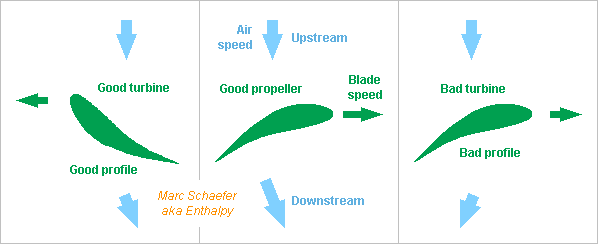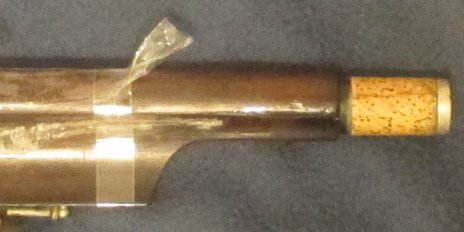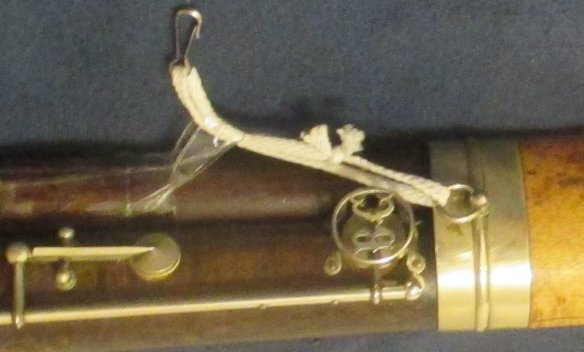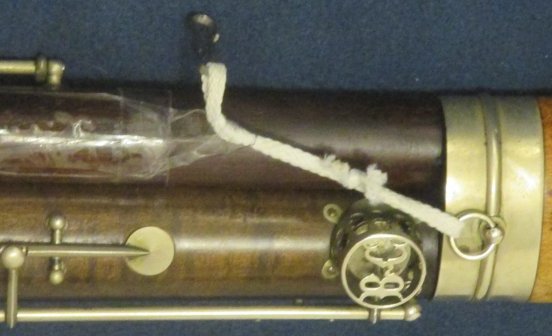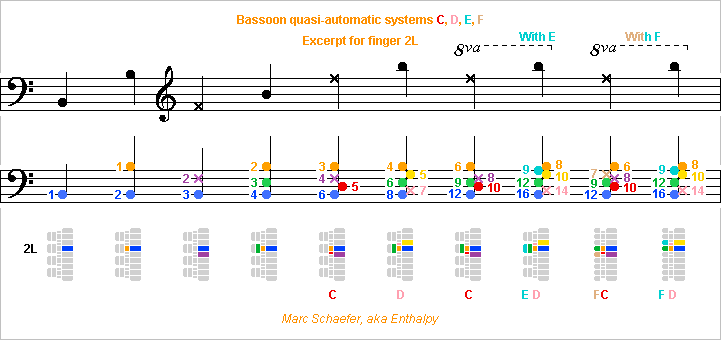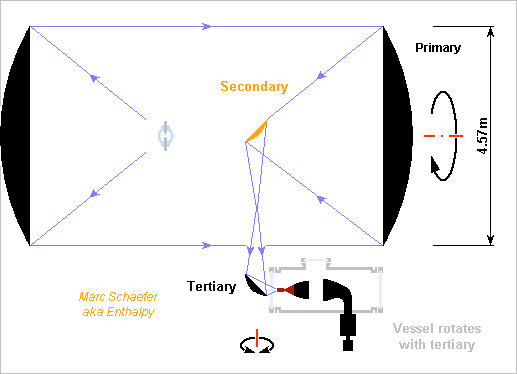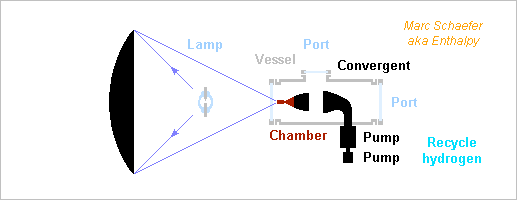-
Posts
3887 -
Joined
-
Last visited
-
Days Won
1
Content Type
Profiles
Forums
Events
Everything posted by Enthalpy
-
Turbofans use presently to equip planes faster than propellers do, and have a rectifying stator stage behind the fan rotor. The stator blades hold also a casing than reduces blade noise. With electric motors, which depend less on fast air intake, the fan would rather sit behind the motor, and the stator be a permanent vane stage before the rotor. Orienting the vane blades would give more control over the fan operation, as at fighter jets. Different orientations depending on the distance to the axis, using blades in several parts or deformable blades, would bring efficient operation as a regenerative turbine, as suggested in my previous message. This needs orientable rotor blades, not trivial. ========== If both the vane stage and the fan stage can rotate around the axis, the plant could rotate mainly the fan for propulsion, and let mainly the vane stage rotate for regenerative braking. Then possibly, the blades can have fixed orientations and shapes. This may need duct sections varied in flight. The vane and fan can sit far apart from an other, for instance upstream and downstream the electric machine(s). Marc Schaefer, aka Enthalpy
-
My proposal has imperfections too. As the circumferential speed decreases at a blade near the propeller's axis, the blade is built twisted to maintain everywhere a good angle of attack in the upstream air speed. Alas, this twist has the wrong orientation in my turbine operation. This increases the drag near the turbine's centre, where the blade moves flat in the wind. Mitigations must exist: reduce the twist, increase the blade-to-air speed ratio, reduce the blades' lift near the centre with a narrow round profile or a wider nose. If gearless, the electric machine favours a wider nose too. Whether this propeller-turbine is better than a nearly-symmetric profile? No qualitative answer. Maybe a vane stage can deflect the air before the turbine, by an angle that depends on the distance to the centre, and be retracted in the nacelle during propeller operation. This looks easier if the propeller sits behind the motor.
-
As electric aeroplanes develop, efficiency wants them to use the propellers as turbines to charge some accumulator during the descent. Most electric motors double as efficient generators, but good asymmetric profiles for propeller blades make bad turbine profiles as on the right part of the sketch, because their curvature has the wrong orientation. A symmetric blade profile would improve a lot the turbine operation, but is less efficient during the more important propeller operation. I propose (but didn't check if this is already done, as usual) to reverse the rotor's rotation as a turbine, as on the left part of the sketch. Then, the accordingly oriented blades have the curvature in the adequate direction, hence can be asymmetric and efficient for both operations. Most electric machines are good in both directions. Marc Schaefer, aka Enthalpy
-
Heard recently about the new company Isar Aerospace developing the Spectrum launcher Isar Aerospace - Spectrum launcher whose general design is a close copy of Falcon 9, with 1 Aquila engine at the second stage, 9 Aquila at the first stage, liquid oxygen and an unspecified "mix of light hydrocarbons", to put 1000kg in Leo or 700kg in Sso. The launcher is meant for constellations. As they hire design engineers for basic motor components, the design might still evolve. So here are my 2 cents. Electric pumps (in this discussion) reach easily Sso with two stages. They're easier to restart, simpler to develop, maybe cheaper, and turbines can replace the electric motors later. A common set of actuators can move the 9 first-stage engines. This avoids collisions and can be lighter and cheaper. A (turbo-) pump common to the 9 engines can be cheaper. But it goes against design reuse and redundancy. scienceforums Spectrum is as sleek as Falcon-9 but the next big thing, the sunheat engine, needs wide fairings scienceforums and more Thoughts about igniters there, for instance with a Diesel hotplug nasaspaceflight A new engine and launcher can burn amines. Easier to produce than synthetic hydrocarbon homologues, some are industrial compounds, gain 3s, denser. Comparison of launcher sizes there chemicalforums Examples of very safe and of more efficient amines there chemicalforums - chemicalforums - chemicalforums Heavier hydrocarbons (pinane, farnesane etc) or amines (Pmdeta etc) aren't easily flammable. chemicalforums I would not replace them with dangerous methane for its small gain. Spiropentane and cyclopropane are denser and more efficient. Unstrained light alkanes are both dangerous and no better than heavy alkanes. Some strained heavy alkanes seem reasonable to produce, safe and 5s better than "kerosene" chemicalforums Cooling the engine with oxygen would enable ethylene and other unsaturated fuels chemicalforums that gain 2s-6s over methane and are denser. Marc Schaefer, aka Enthalpy
-
Bassoon balancer v3. The string coming from the boot joint is redirected by a loop that now has its ends parallel to the body, while the ring perpendicular to the body passes straight over the loop. This v3 is much easier to build and to adjust. Still adhesive tape, about 3 plies. At the loop, two foldings give 90° each, and an added short tape part neutralizes the sticking side. V3 too provides perfect roll balance and leaves some weight on the left hand, since an attempt with perfect pitch balance was unplayable. The adhesive tape always separates from the concave portion of the tenor joint, so instead of sticking it there, this time I gave it roughly the loose length left by the spacing to the bass joint. Marc Schaefer, aka Enthalpy
-
Nasa and Esa consider a mission to bring Mars samples back to Earth. The sunheat engine makes it much easier and enables a more ambitious mission. The artist rendering I saw recently suggest ion propulsion with big solar panels and small thrust. The sunheat engine brings a specific impulse similar to ion engines and a much stronger thrust for the same sunlight collecting area, so a heavier spacecraft can manoeuvre faster. I won't detail that.
-
The Atecopol collective spreads doubt about the hydrogen amount needed by airliners blogs.mediapart.fr (in French) "10 000 wind turbines just to feed the planes starting from Roissy" (France's biggest airport), so here are my figures. Some 240 000 airliners a year start from Roissy, needing about 10Mt kerosene that produce 0.4EJ heat. The better efficiency of fuel cells needs 0.2EJ/year from hydrogen. Engines that burn the hydrogen, as Safran would like, are nonsense. A 5MW terrestrial wind turbine produces mean 1.3GW or 40TJ/year. 50% yield to hydrogen takes 10 000 wind turbines, OK. Germany has already 30 000. These wind turbines cost 14G€ and save yearly 80 000 000 barrels kerosene. Crude oil at 40usd costs yearly 3G€, kerosene 7G€. The production pays the investment in 2 years, after that it's all profit. Very few investments bring money that quickly. This single operation would reduce France's trade deficit by 1/20th.
-
Hi MacSwell, thanks for your interest! I don't know any existing translation. The French document is a student's thesis. Google Translate maybe? Much of the document is verbose and loosely related with the innovation, so maybe the drawings can tell you where to let translate. Searching for "Luc Armant" or for "aile d'eau" on youtube brings nice videos, easier to grasp and containing much the same information. In addition to what I proposed later than he did, Luc Armant also conceived and experimented successfully human-free regulators for the sail and the centreboard, impressive achievement.
-
Luc Armant proposed the same idea before I did: leaving only the centreboard in the water augredelair.fr (36MB in French with drawings) and he's a member of the Syroco team. Best wishes to the project!
-
The Syroco speedcraft tries to develop what I proposed, here are their Youtube channel and main description video: UC1-4BeVLyF-g_qb3i4HoM9g - Blb2S6Ytngg Their options (on the video, I suppose the craft doesn't exist yet, so many choices can evolve): Flexible sail, this differs from my proposal. Eases the start. Less efficient. Centreboard tied stiffly to the hull, this differs from my proposal. Floating hull near the water with the crew. Eases the start. Less safe than a hull at the wing. The centreboard is not swept. It would have helped avoid cavitation. The sail and centreboard nearly perpendicular to the line joining them is a usual speedcraft design since Bernard Smith proposed it half a century ago. Leaving only the centreboard in the water is my idea, I believe. Much of the rest is from them, especially the design, while I only proposed a bare idea. But I'd have felt elegant of them to cite me. Anyway, I'm happy that someone tries it.
-
A part of a car or truck turbocharger could be a makeshift centrifugal pump. It's not optimized against cavitation nor for liquids. It still needs difficult bearings and a quick electric motor. But it's very cheap and immediately available.
-
Hi JC! D-D reactors, including fusors, achieve fusion. But they are energy consumers, not producers. I've suggested smaller tokamaks fed with D only that consume energy to produce radioisotopes, especially for hospitals http://www.scienceforums.net/topic/107732-tokamak-produces-radioisotopes/ Though, ITER claims to explore the way to energy production, then not with the too difficult D-D but with D-T. The link to my estimates was in my message of November 30, 2014 but the website is closed meanwhile. So here is the full text, minimally rewritten. ========== Examples here of pollutant production at a Pb–Li coolant meant to regenerate tritium. Doc in the Handbook of Chemistry and Physics and in Peter Reimer 's PhD thesis: kups.ub.uni-koeln.de [In this folder] 204Pb makes 1.4% of natural Pb. The neutron doubling process is efficient (2.1b over 5.3b at 14MeV) and leaves 203Pb, decaying in 2.2 days by electron capture of 0.97MeV with γ emission. 206Pb makes 24% of natural Pb. When hit by a 14MeV neutron, it can emit an α to leave 203Hg, decaying in 47 days by β− with a 0.28MeV γ. Section for this production is only 0.7mb over 5.3b at 14MeV but 206Pb is abundant. Investigating more would bring more cases. 1.4% abundance or 0.7mb reaction section may look rather small, but: 235U produces 131I in 2.8% and 137Cs in 6.1% of the fission events; Fission of 235U brings 200MeV. It takes 8× more D–T and n–Li reactions to produce as much heat. Combine both, you get as much 203Pb as 131I per MW. Now, one may argue that isotopes 204 and 206 could be removed from Pb… Well, no. Never completely. Changing a concentration by a factor of 10 is already a big effort. But 10× less pollutants is still far too much. I'm confident other pollutants are produced by 207Pb and 208Pb, like 204Tl. I only checked neutrons with 14MeV as they're emitted. As they thermalise before being used by 6Li, more reactions occur. Such reactions look inherent to tritium regeneration. In a leak of hot coolant, I imagine the 16% lithium ignite in air (or don't they?), with the fire releasing in the atmosphere the contained pollutants. Marc Schaefer, aka Enthalpy
-
General knowledge, it doesn't need a specific citation.
-
On my old French bassoon, I bored a second piano hole just under the first one at the bocal, closed by the same long pad, hoping to ease and raise C#, D on second register and ease C#, D, Eb, E, F on the 4th octave. It did that more or less. The less expected effects: 4th octave E became as easy as the A below. 4th octave D became impossible. Good reason, I tapped the second hole. But the much easier E confirms it: one lone hole per semitone will let my pianolike system add a half or full octave to the bassoon at identically easy emission. Oboes and flutes should improve similarly. Marc Schaefer, aka Enthalpy
-
For suborbital rockets too, be it science or tourism, liquid propellants and electric pumps are an interesting option. >100km altitude needs efficient engines, and optimizing solids takes much development, while liquids provide naturally a good ejection speed. Roll control is easier too. In many cases, one liquid stage can replace two solids. The same propellants selection applies: oxygen, helium, and a storable fuel like Pmdeta. Electric pumps and batteries outperform the simpler pressurized tanks.
-
For suborbital rockets too, be it science or tourism, pressure-fed liquids are an interesting option. >100km altitude needs efficient engines, and optimizing solids takes much development, while liquids provide naturally a good ejection speed. Roll control is easier too. In many cases, one liquid stage can replace two solids. The same propellants selection applies: oxygen, helium, and a storable fuel, better an amine like Pmdeta. And here too, graphite fibre tanks outperform steel tanks. Electric pumps and batteries would outperform pressurized tanks.
-
More fusion reactions exist, yes. But D-T is the only accessible to tokamaks presently. It's far less difficult than any other one because only one proton in D repels one proton in T. D-D reacts too but produces little heat as it releases the less stable 3He or T, and the reaction rate is 100 times less than D-T. Other fuels like Li or 3He are hugely more difficult. They work in hydrogen bombs, in some inertial confinement setups, but as a means of controlled net energy production they are out of reach. ========== After ITER got >10 years late because of Covid-19, some sort of assembly was celebrated recently (2020, who cares about the month meanwhile). As for the cost, present figures by the promoters fluctuate between 20 and 30G€. But the DOE, not significantly involved in this huge squandering, includes also the hardware developed by the participating countries and brought to ITER, to get >60G€ instead. For an energy source as polluting as uranium fission and available half a century after wind turbines, ITER is an expensive scam.
-

What product is released in a ammonium nitrate explosion?
Enthalpy replied to Legoman2179's topic in Chemistry
Ammonium nitrate can detonate without a fuel. This is perfectly known. My source is a book is two thick volumes that deals only with explosives. But Wiki tells it too: "While ammonium nitrate is stable at ambient temperature and pressure under many conditions, it may detonate from a strong initiation charge. It should not be stored near high explosives or blasting agents." https://en.wikipedia.org/wiki/Ammonium_nitrate Starting a detonation in ammonium nitrate is uneasy, but a local part tainted with some fuel suffices. The molecule undergoes detonation, that is, propagation of the decomposition by the shock wave rather than by heat, without passing by ammonia and nitric acid. ========== The products released are not quite clear to me. In the detonation itself, the Propep software finds exclusively N2, H20, O2. The molar composition after expansion from 1 000 bar or 10 000 bar is: 0.46 H2O 0.29 N2 0.14 O2 0.12 H2O liquid Zilch, nada, niente -> Everything else, including N2O, NO, NO2 Though, some powder is dispersed without detonation, which might provide other decomposition products making the NO2 colour seen at Beirut. Red smoke was reported over an other ammonium nitrate explosion, I wish I saw colour pictures. ========== Video of the damage in Beirut by the explosion of 4 August 2020 https://www.youtube.com/watch?v=FMvBg7YIDAA impressive damage, impressive pilot skills. ========== If ammonium nitrate in thousands of tons were stored at Beirut's port, inevitably some Lebanese faction used it to make bombs. In the morning of 4 August 2020 before 11h CET (9h UT), a small dozen of big four-propellers military cargo planes flew over my home near Ramstein (US base in Germany). About as many flew (back?) spread over the 5 and 6 of August. That's usual before military operations. Several countries have developed laser weapons. The US demonstrated (and abandoned) a jumbojet-sized one to destroy missiles 500km away, and more recently smaller lasers to destroy at less distance a drone approaching a ship. Because igniting a fire is much easier than destroying a missile, inevitably these lasers serve for arson too. Accountability would justify the heavy means despite one missile from one combat plane would obtain the same result. Less expectedly, the French secret services tell me to shut up about this, rather than the US ones. -
Wide variety of materials. What has become extremely common is "reconstructed leather", which is a plastic resin loaded with fibres from leftovers of real leather. Goods manufacturers use it as a cheap replacement and label it "leather" with absolutely no distinctive word nor label. Possibly, legislation allow that when the mass proportion exceeds 50%. The polymer matrix is often polyurethane, which interferes with our hormone mechanisms. It can also be other polymers, very often loaded with plasticizers to imitate leather's bendability, and these plasticizers use to be toxic and migrate out of the polymer over time. So consumers can legitimately dismiss reconstructed leather, as well as leather-free polymer imitates. Alas, they are very difficult to distinguish from true leather. On a picture, it's about impossible. Where leather is bent, especially goat leather, it makes finer wrinkles than reconstructed leather. Under the fingers, true leather is tackier, quite different. The odour differs too, for those people who knew true leather. Because consumers can legitimately dismiss reconstructed leather but have nearly no means to distinguish it on a picture, I wish legislation to impose different words and logos for reconstructed leather.
-
Most woodwinds have tone holes. Very wide on the Boehm flute and the saxophone, less so on the clarinet, very narrow at the throat of an oboe or basoon. tone holes are inductive, so the wave doesn't reflect fully at the first open tone hole, especially high harmonics or notes, and more so at narrow long holes. This dampens and detunes the high harmonics, a useful feature for a mellow sound. tone holes are also lossy, more so if narrow, and this helps match the reed where the tube is shorter, hence the narrower tone holes at the throat of the oboe, clarinet, bassoon, tárogató (but the saxophone does it too little and its octave jump is heterogenous). I should come back some day with more quantitative reasons. At their end, woodwinds should replicate the response of the tone holes set. Most have a flare there: it reduces the reflection of the highest harmonics by matching the impedance to free air, it detunes their resonance too, but a flare doesn't match the losses of the tone holes set, it even reduces the losses. The reed is too little damped there, it oscillates too strongly, and the sound gets readily harder, like when a guitar amplifier saturates. At the tárogató, Stowasser added many small side holes, always open, near the end. Maybe they existed before, since many oboes and a few clarinets have one open side hole near the bell, but I'll call them "Stowasser's holes". They imitate a tone holes set by spreading the reflection over the distance and by creating losses, especially at half-wavelengths not much bigger than the distances between the holes and to the end. At identical inductance, several narrow holes bring more losses than a wide one. Stowasser did that better, clarinets and oboes failed to copy it in a century, but you can see them in my instrument silhouettes. The heckelphone has a similar end plate. Stowasser put holes on two ranks. Better for the wood, but it also spreads the reflection more. Here the Fourier transformation of the distribution of the reflection tells the effect on the spectrum. If expressing the distribution as a convolution of positions and amplitudes, the spectrum multiplies the transformations of the individual distributions. With two hole locations plus the end, you get the product of two frequency responses and potentially more filtering. Here too, I should come back with more quantitative explanations, some day. What can improve over Stowasser: more efficient filtering results from equal reflection coefficients, between the holes and the end, and also at every elementary distribution of reflections. This needs bigger holes near the end and smaller ones farther, as can be seen in my instrument silhouettes. ========== The bassoon's bell has no flare: too wide and long. The French system has a narrower section in the bore, the German system has at least a wider section. Quite insufficient at my old Buffet-Crampon: the two lowest notes sound harder and need much embouchure adaptation. At its lowest notes, the bassoon should gain much from Stowasser's holes, the contrabassoon too. Same for low clarinets and for saxophones. This would need a slightly longer bell, but the bore can have narrower sections to save length. Marc Schaefer, aka Enthalpy
-
Here are (formerly quasi-automatic) pianolike basson fingerings C, D, E, F. These small changes to fingerings B are mutually compatible, except E and F. Their added buttons open more lone holes to ease high registers or add a register. Drawn for finger 2L only, with all options at once: System C adds a button (displayed red) per finger to open the lone hole three semitones above the main transition, in a harmonic ratio 5:6. Then, already the register 6 opens three lone holes in ratio 3:4:5:6, and the register 12 opens four, 6:8:9:10:12. The two lowest notes on these registers would need extra lone holes unwelcomed on the wide branch, or for simplicity these two notes don't open one lone hole more. One button more on an existing key is cheap, one hole more is expensive. System D adds a pink button per finger to open the lone hole two semitones above the main transition, in a harmonic ratio 7:8, alas imprecisely. Then, the register 8 opens four lone holes in ratio 4:5:6:7:8, and the hypothetical register 16 one more, in ratio 14:16. The three lowest notes would need extra lone holes on the wide branch, or they don't open one lone hole more. System E adds a turquoise button per finger to open the lone hole ten semitones above the main transition, in a harmonic ratio 9:16. They need no addition lone hole and stabilize the hypothetical register 16 with ratio 8:9:10:12:(14):16 - maybe. 14 results from option D. The main holes, all open below the main transition, help the emission as they contribute the ratio 16:17:18:19:20. System F shifts the E button to the top, so the next lower one, brown, doubles at nine semitones above the main transition and makes the harmonic ratio 7:12, alas imprecisely, for 6:7:8:9:10:12. Some buttons are quite small. The very inaccurate harmonic 7 risks to spoil both the intonation and the emission. The fingers must move even more covers. Which option(s) bring a net improvement? Trials shall decide. The body's shape, position of hands, holes distribution from system B remain. Marc Schaefer, aka Enthalpy
-
Chematica, now Synthia, does this (and nobody told me a word) chemicalforums - wikipedia - sigmaaldrich
-
Could the fan blades be of stretched polymer at a turbofan? They demand strength-to-mass at room temperature. The air arrives at almost 0.95 Mach, the blades must rotate significantly faster. I know titanium alloy and graphite composite for them. Blades need impact resistance too, creep resistance, and more. Stretched LCP would improve the strength-to-mass, other polymers too. Just milling the blades from stretched raw material would be simpler than now. Injecting the blades with high shear under limited heat to obtain strength would be fantastic. Marc Schaefer, aka Enthalpy
-
Thoughts about the chamber's experiment rig here under. I put far less time in the concentrators and don't plan to detail their development. The cryocooler is small, it needs experimentation in a normal lab. Thoughts may come or not, rather elsewhere, about the test ground for the multilayer-insulated hydrogen tank. ----- Light source ----- It must reproduce concentrated sunlight in space: same power per surface unit, at the same convergence angle that distributes the heat in the chamber. Sunlight on Earth can't. A xenon arc lamp is the usual and possibly only solution. D=2.8m concentrators for Vega-C need 8kW light for one Sun-Earth distance, D=4.57m for Ariane and equivalents need 22kW light. Single lamps achieve this. Extreme temperature for months defines much the chamber design, so the rig must test it. 24h operation is needed despite hydrogen and strong light. Spare lamps at hand are prudent. Cheap electricity is better. To protect humans and limit heat at the test vessel's porthole, I prefer that the lamp or a filter suppresses the UV. With identical power, the difference at the chamber is negligible. ----- Concentrators ----- An elliptic mirror shall concentrate the light from the lamp to the chamber being developed. It could be smaller than the flight concentrator but must distribute the power faithfully over the directions. Successive mirrors may help. Test of the real concentrator needs an additional big parabolic mirror that makes the lamp's light parallel. The vessel can then sit in between if the focal distance is meaningful without secondary and tertiary mirrors. The chamber can be tested with the optical path fixed, and the optical path steered without the chamber. Acceptable to me. Or in the optics of Jun 21, 2013 here scienceforums the axis from secondary to tertiary mirrors can be vertical, the primary rolls around its axis and the vessel and chamber rotate around the secondary to tertiary axis, with all piping and wiring. ----- Vacuum vessel ----- It hosts the chamber, maybe a last mirror, but not the primary, to save costs. Light enters almost concentrated through a porthole. More ports are desired for observation, assembly, and varied optical setups. The vessel must host the nozzle, D=0.37m for D=4.57m concentrators. The windows should be coated against reflections, absorb little the remaining wavelengths, and can receive blown air on the outer face. A flat window may alter only the focal distance but with chromatic aberration, while a spherical one centred on the focus could be slightly astigmatic, but I'm weak on optics. A diffusing diaphragm around the window is safer. Water cooling seems necessary in the vessel, to protect the walls in a faulty operation, and to cool the ejected hydrogen, whose stagnation temperature would fit tungsten only. A chamber for D=4.57m concentrators ejects 0.2g/s hydrogen and 0.08g/s for D=2.8m but pressure shall remain <<1Pa. That's a difficult task achieved by a big turbomolecular pump, not cheap. Second hand? An actively cooled convergent downstream the nozzle would help much. A primary pump is required too. ----- Hydrogen ----- 0.2g/s over a week-end is 43kg hydrogen, 500m3 at STP, or many 300bar bottles, dangerous. Over 3 months it's 1.5t, expensive and inconvenient. I couldn't find pleasant ways to produce slowly in situ neither. Better reuse the hydrogen pumped from the vessel. This may need some purification. The total hydrogen amount is then small. When switching between air and hydrogen, I'd purge all parts with nitrogen, which needs additional circuits and bottles. Ask an expert. ----- Fabrication ----- The mirrors and the lamp mount could be subcontracted, because people protection, surveillance sensors, and distribution over spectrum and angle aren't trivial. The vessel could be subcontracted. Or adapt a second hand vessel to the task. Hydrogen piping, with the purge design, sensors and certifications, could be subcontracted. Marc Schaefer, aka Enthalpy
-
This is how I imagine the development of the sunheat engine. ----- Chamber ----- It needs a very small team, with at least one scientist of very broad knowledge, and 1-2 more people used to innovate. A team of more specialized people may achieve it, or not, and less well. A bigger team would not work proportionally faster. A experiment rig is indispensable, available exclusively to the team all the time. Reformulated: computer simulations followed by a short experimental verification at an external facility would fail. The concentrator used to develop the chamber provides the power, power density, convergence angle of the flight model. It differs by the mass, materials, fabrication, lack of deployment. ----- Concentrator ----- It needs at least one mechanical designer used to space hardware and innovative designs. Expertise for optics, heat and control could come from a separate brain if needed. Expertise for launch environment, resistance of structures, space environment, deformations in operation, materials, fabrication processes should be available in the designer's brain. A team of more than 2 people would not work proportionally faster. Both teams can share people. The concentrator development can start immediately or once the chamber shows convincing results. ----- Tanks ----- The vacuum-insulated tank technology I proposed doesn't still exist, though Ariane 6 probably adopted it and future aeroplanes too. It's a significant development too that needs a specific test ground and can be sold separately as hardware or technology. Very few people, no banal knowledge, one year. Missions to the outer space need for the hydrogen a cryocooler I described elsewhere. It should have existed for decades at least for oxygen, but was neglected. The uneasy development is less exotic than for the chamber. Can be sold separately as hardware or technology. Few people, 2-3 years. Missions to Geo, the Moon, conditionally Mars, need no cryocooler, nor does a demonstrator of the sunheat engine in Leo. ----- Company ----- If a company is created especially, the burden needs at least half a seasoned person for months. Selling the engine or the technology needs later a salesperson who knows the people and habits of the space activity. The lab for a Vega-sized demonstrator can be normally tall with a good area and wide doors. For Ariane or Falcon 9, the lab must be 3 stories tall. Hydrogen, strong lamps and 24h tests need detectors and access control. ----- Dough and proof in space ----- All these developments are rather affordable. I evaluated in 2018 in a rich country to 400k€ the development of the chamber alone. Scaling for varied launcher sizes needs limited development. Add the concentrator and the tank, and for 2-3M€ you define the future of space travel. - BUT - Customers want flight-proven hardware before they design a mission around it. The sunheat engine can't be very small, and mission planners may want the real size proven in flight. Sharing a launch isn't easy neither, as the definitive concentrators are as wide as the fairing enables. Problem: a launch on Electron costs 6Musd, on Vega 20M€, well over the development cost. This is a toxic combination for the startup company I had imagined. Unless a small cheap seat can be found on a launcher (which is technically difficult), the business model of a small company selling hardware looks now bad to my eyes. Maybe an agency or bigger company shall develop these technologies, or a smaller company sell them the technologies before they have flown. Marc Schaefer, aka Enthalpy


